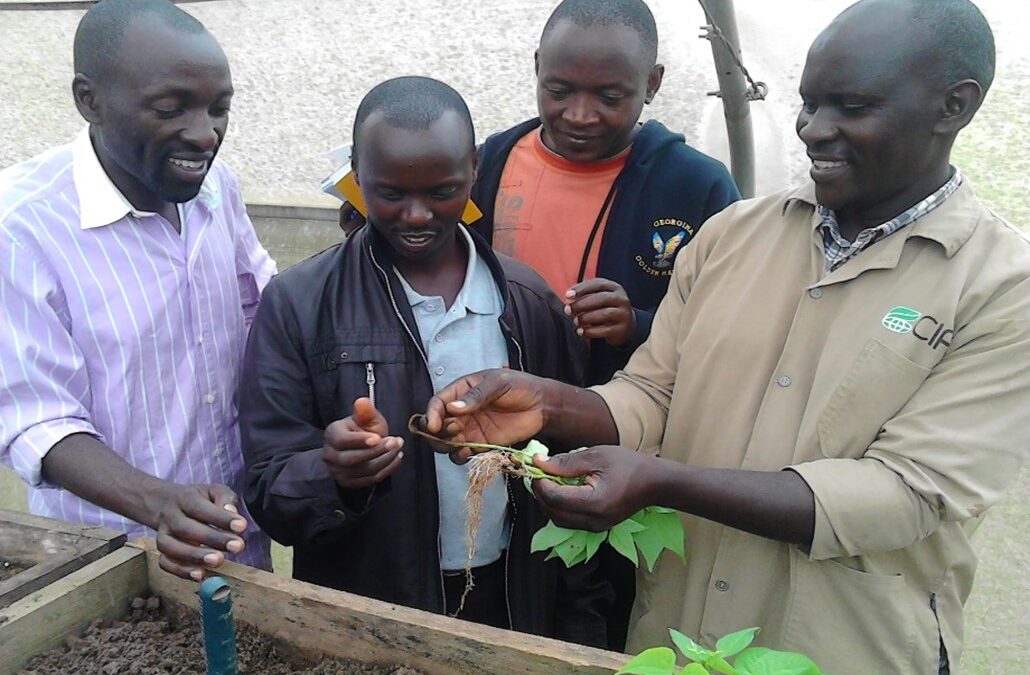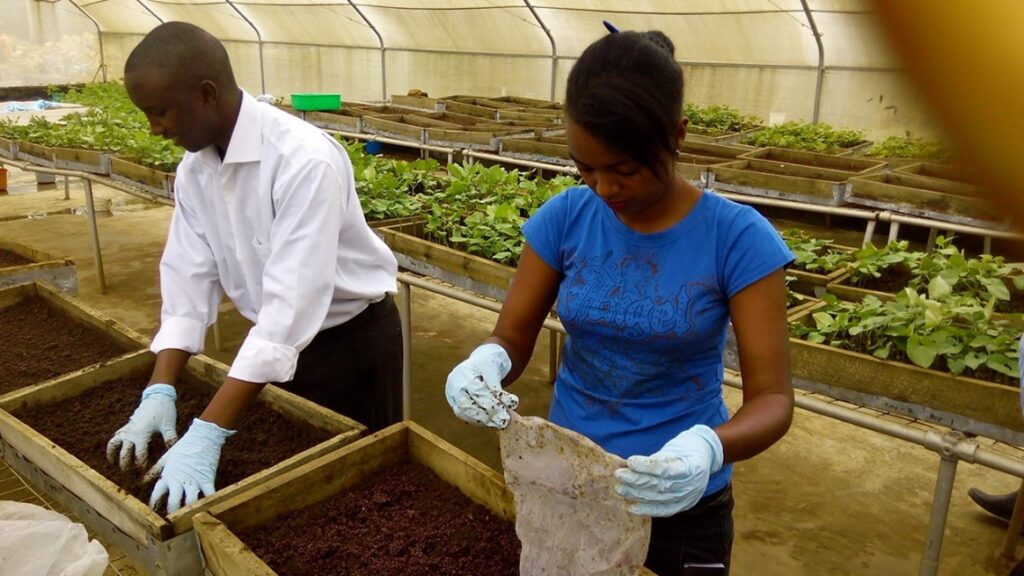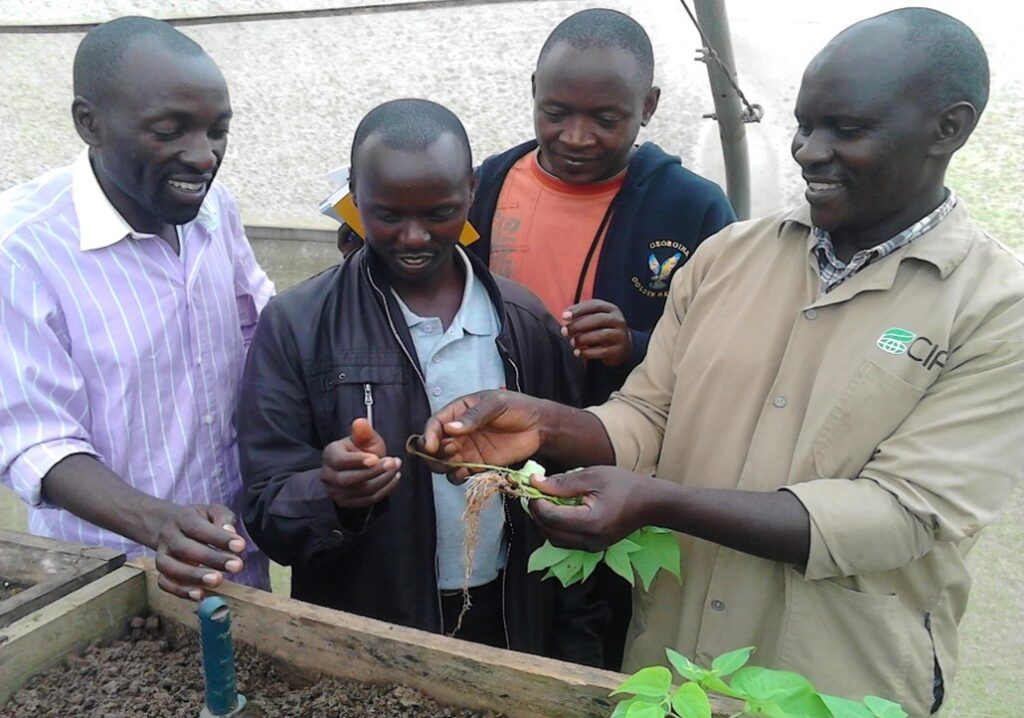by Kato, F., Male, A., Amongi, W., Odama, R., Musoke, S., Acam, C., Nababi, H., Nakyazi, B., Naluwooza, C., Kabwama, A., Wekhichu, J., Ndati, J. and Mukankusi, C.
The root rot infections are complex diseases caused by pathogens that occur within the soil rhizophere or in the root systems either during wet or dry conditions and mostly affect the below-ground tissues and above the soil surface (collar region). Pythium and Phytophthora root rots (wet root rots) are caused by Oomycetes which thrive in high moisture conditions. Dry root rots such as the Southern blight are caused by the Sclerotium rolfsii while the Fusarium root rots by the Fusarium spp. Evaluation of these diseases is important because they have been reported to cause significant yield losses of up to 100% in cases where there is low soil fertility, high moisture, and drought. The bean program, Pan Africa Bean Research Alliance (PABRA) receives germplasm from various country partners to evaluate all incoming germplasm for root rot diseases to identify any potential sources of resistance to the root rot pathogens. This is done by using assessment scales especially the disease evaluation scale of (1-9) which depicts a continuum of disease severity. Any promising lines identified are then incorporated in a breeding scheme to develop disease resistant breeding lines with the best bean lines maintaining a range of 1-3 disease score.
Significant strides have been taken to increase the efficiency of phenotyping for root rots. Previously the beans were grown in wooden inoculating trays in different sizes specific to local manufacturers which could keep the pathogens in the wood-iron sheet crevices. Most of the boxes measure 76 x 42.5 x 12 cm. The wooden trays were not economical because they would deteriorate very quickly because of high moisture which made the wood rot and the iron sheets rust. Initially the wooden trays were efficiently serving only two years before replacing them while their costs were higher than the plastics. This innovation has saved about $90-100 and this would also depend on the numbers of the trays required for a particular root rot activity. In addition to the root rot activities, they are also serving as storage vessels in the seed gene bank. To improve and standardize the phenotyping method of root rots, Plastic trays/ crates were adopted. They are improved, very compact, durable, and are easily sanitized with moderate dimensions (58 x 40 x 10.5) cm compared to the wooden trays which could accommodate a smaller area utilizing many in a small space. Typically, the common beans are planted in a virulent pathogen soil admixture in the plastic trays and allowed to grow within a period (21 days post germination), and then terminated (destroyed by uprooting them and the soil debris washed off. Lastly, the disease severity is assessed using the 1-9 scale. This innovation allows both destructive and non-destructive analyses of bean germplasm under controlled environmental conditions. And in this context, the destructive analysis of the trial is preferable because it allows the evaluator to observe the below ground symptoms caused by the pathogen very clearly to avoid misdiagnosis. The data is also digitized so that it is compatible with digital data collection tools like field book.
Some illustrations of Root rots of varying severity, rating for the southern blight severity.
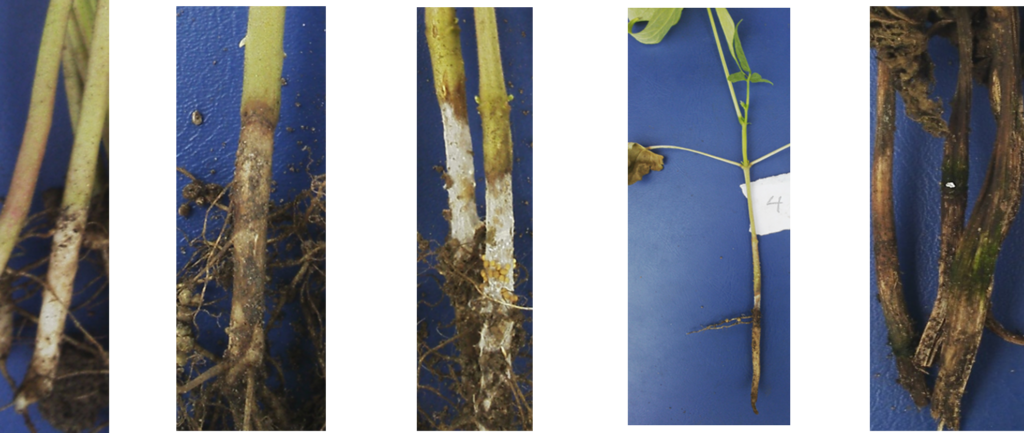
1 = No Disease symptom, 2= Disease symptoms without visible fungal outgrowth, 3 = Disease symptoms with visible fungal outgrowth, 4 = Partial wilting of plant and 5 = Complete wilting and death
Fig. 1. Technicians homogenizing and distributing the colonized millet grains into the soil in the wooden inoculating trays
TECHNICIANS CONDUCTING DISEASE EVALUATION
Fig 2. Technician evaluating the uprooted diseased plants affected with the root rot infections following a destructive sampling method in the screen house.
WOODEN AND PLASTIC TRAYS:
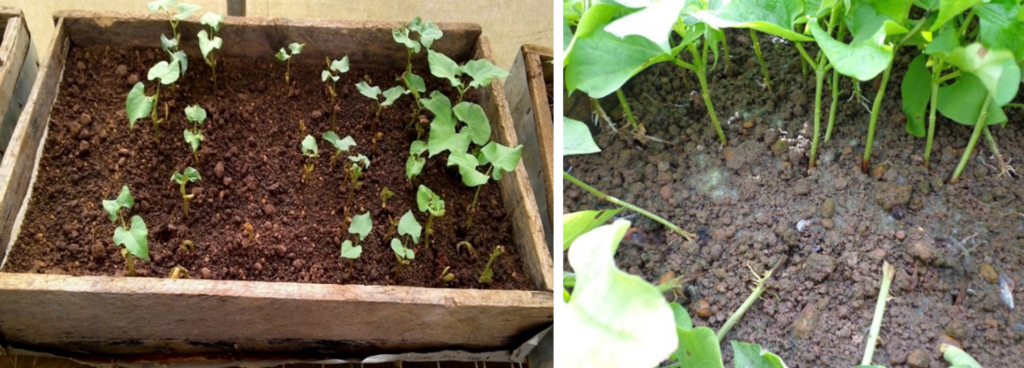
Figure 4. Bean seedlings emerging from the artificially pathogen infected soils (left) and bean seedlings displaying symptoms of root rot infections in the tray (Right).

